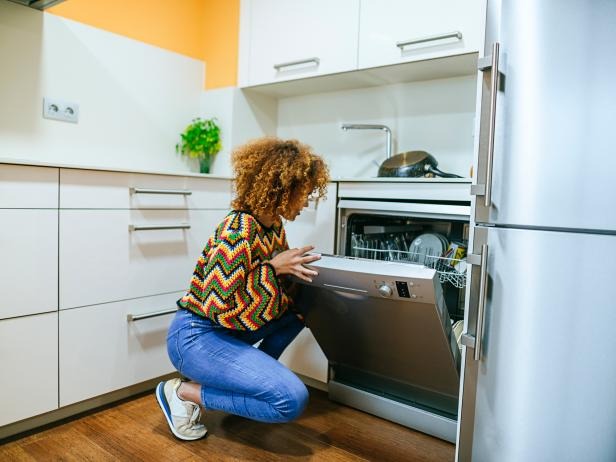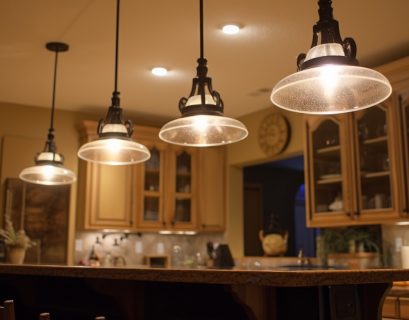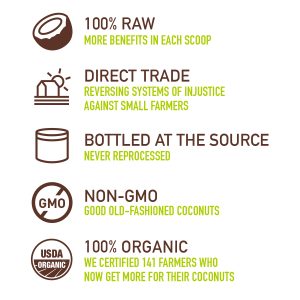The kitchen, often the heart of the home, is a space where daily activities consume energy and resources. As environmental consciousness grows, individuals are increasingly seeking ways to transform their kitchens into sustainable havens. In this article, we’ll explore how kitchen appliances can be carefully selected or modified to enhance energy efficiency and contribute to environmental sustainability, creating a space that aligns with both culinary needs and ecological responsibility.
1. Choose ENERGY STAR Certified Appliances:
a. Benefits:
- Energy Efficiency: ENERGY STAR certified appliances meet strict energy efficiency standards, consuming less energy during operation.
- Environmental Impact: Choosing ENERGY STAR appliances reduces greenhouse gas emissions, contributing to a lower environmental footprint.
- Financial Savings: Energy-efficient appliances often result in lower energy bills, providing long-term financial savings.
b. Considerations:
- Explore ENERGY STAR Labels: Look for the ENERGY STAR label when purchasing appliances such as refrigerators, dishwashers, and ovens.
- Research Rebate Programs: Some regions offer rebates or incentives for purchasing ENERGY STAR appliances, providing additional financial benefits.
2. Opt for Induction Cooktops:
a. Benefits:
- Energy Efficiency: Induction cooktops are highly energy-efficient, heating cookware directly through magnetic induction, eliminating heat loss.
- Precision and Speed: Induction cooktops offer precise temperature control and quick heating, enhancing cooking efficiency.
- Safety Features: Induction cooktops only generate heat when cookware is present, reducing the risk of burns and enhancing safety.
b. Considerations:
- Compatibility with Cookware: Ensure cookware is compatible with induction technology by checking for a magnetic base.
- Initial Cost: While induction cooktops offer long-term energy savings, the initial cost may be higher than traditional electric or gas cooktops.
3. Select Energy-Efficient Refrigerators:
a. Benefits:
- Optimized Cooling: Energy-efficient refrigerators use advanced technologies to optimize cooling, reducing energy consumption.
- Smart Features: Some energy-efficient refrigerators come equipped with smart features, allowing users to monitor and control energy usage.
- Long-Term Savings: Energy-efficient refrigerators contribute to lower electricity bills, offering savings over the lifespan of the appliance.
b. Considerations:
- Appropriate Size: Choose a refrigerator size that suits your household needs to avoid unnecessary energy consumption.
- Temperature Settings: Set refrigerator and freezer temperatures at optimal levels to ensure efficient operation.
4. Invest in Convection Ovens:
a. Benefits:
- Even Cooking: Convection ovens use fans to circulate hot air, ensuring even cooking and reducing cooking time.
- Energy Efficiency: The efficient distribution of heat in convection ovens allows for lower cooking temperatures, saving energy.
- Versatility: Convection ovens are versatile, accommodating various cooking methods from baking to roasting.
b. Considerations:
- Adjust Cooking Times: Familiarize yourself with convection cooking times, as they may differ from conventional oven times.
- Energy Savings Tips: Maximize energy savings by using convection settings for multiple dishes simultaneously.
5. Upgrade to Energy-Efficient Dishwashers:
a. Benefits:
- Reduced Water Usage: Energy-efficient dishwashers often use less water, contributing to water conservation efforts.
- Efficient Drying: Advanced drying technologies in energy-efficient dishwashers reduce the need for additional energy-consuming drying steps.
- Effective Cleaning: Energy-efficient models maintain cleaning performance while minimizing resource consumption.
b. Considerations:
- Operate with Full Loads: Maximize efficiency by running the dishwasher only when it is fully loaded.
- Choose Shorter Cycles: Opt for shorter wash cycles when appropriate to further reduce energy and water usage.
6. Consider Smart Appliances with Eco-Mode:
a. Benefits:
- Energy Monitoring: Smart appliances with eco-mode allow users to monitor and adjust energy usage in real-time.
- Remote Control: Some smart appliances enable remote control, allowing users to optimize settings even when away from home.
- Adaptive Features: Smart appliances may include adaptive features that optimize operation based on usage patterns and energy demand.
b. Considerations:
- Compatibility with Smart Home Systems: Ensure smart appliances are compatible with your existing smart home systems for seamless integration.
- Cybersecurity Measures: Implement robust cybersecurity measures when connecting appliances to smart home networks to safeguard against potential risks.
7. Integrate Efficient Ventilation Systems:
a. Benefits:
- Improved Air Quality: Efficient ventilation systems remove cooking odors, pollutants, and excess moisture, improving indoor air quality.
- Energy Recovery: Some ventilation systems include energy recovery features, reclaiming heat from expelled air and reducing the need for additional heating.
- Prevention of Mold and Mildew: Adequate ventilation prevents the accumulation of moisture, minimizing the risk of mold and mildew growth.
b. Considerations:
- Regular Maintenance: Clean and maintain ventilation filters regularly to ensure optimal performance.
- Select Ventilation Hoods with Variable Speeds: Choose hoods with variable speeds to adjust ventilation intensity based on cooking needs.
8. Use Programmable Slow Cookers:
a. Benefits:
- Energy Efficiency: Programmable slow cookers use low, consistent heat over an extended period, reducing overall energy consumption.
- Convenience: Set-and-forget programming allows for convenient meal preparation without constant monitoring.
- Versatility: Slow cookers can be used for various dishes, from soups to stews, enhancing kitchen versatility.
b. Considerations:
- Choose the Right Size: Select a slow cooker that matches your household size to avoid unnecessary energy usage.
- Optimize Cooking Times: Familiarize yourself with optimal cooking times for different dishes to maximize energy efficiency.
9. Utilize Energy-Efficient Small Appliances:
a. Benefits:
- Space Efficiency: Energy-efficient small appliances, such as toaster ovens and microwaves, are often more space-efficient than their larger counterparts.
- Quick Cooking Times: Small appliances generally have shorter cooking times, contributing to overall energy savings.
- Targeted Heating: Toaster ovens and microwaves deliver targeted heating, minimizing energy dispersion.
b. Considerations:
- Match Appliance Size to Needs: Choose small appliances that match your cooking and heating needs to avoid unnecessary energy usage.
- Read and Follow Energy-Saving Tips in Manuals: Manufacturers often provide energy-saving tips in appliance manuals; familiarize yourself with these recommendations.
10. Explore Renewable Energy Integration:
a. Benefits:
- Reduced Grid Dependency: Integrating renewable energy sources, such as solar panels, reduces dependence on traditional energy grids.
- Lower Carbon Footprint: Generating energy from renewable sources contributes to a lower carbon footprint and overall environmental sustainability.
- Potential Cost Savings: Over time, investing in renewable energy may result in cost savings and, in some cases, financial incentives.
b. Considerations:
- Assess Feasibility: Evaluate the feasibility of integrating renewable energy sources based on location, climate, and local regulations.
- Consult with Professionals: Seek advice from renewable energy professionals to determine the most suitable and cost-effective solutions for your home.
Conclusion:
Transforming the kitchen into an eco-friendly space involves thoughtful choices in selecting and modifying appliances. From choosing ENERGY STAR certified products to integrating renewable energy sources, every decision contributes to energy efficiency and environmental sustainability. As technology advances, homeowners have an increasing array of options to make their kitchens not only efficient and convenient but also aligned with the principles of sustainable living. By prioritizing eco-friendly appliances, individuals can play a pivotal role in creating a greener future, one kitchen at a time.

















